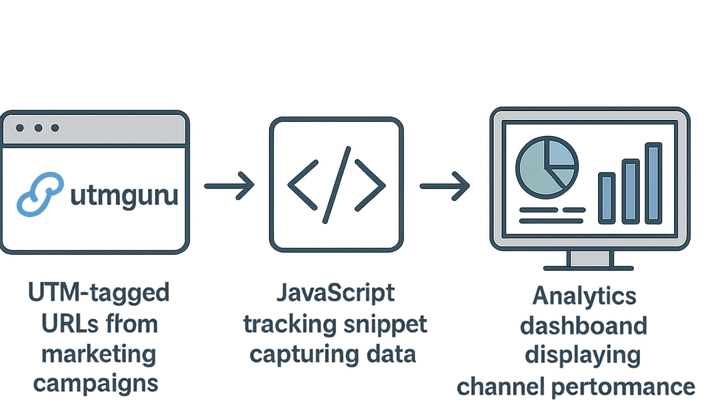Published on 2025-06-29T17:55:41Z
What is Source Tracking? Examples & Best Practices
Source Tracking is the practice of attributing incoming website traffic to its original marketing source, such as social media, email campaigns, paid ads, or referrals. It involves appending tracking parameters to URLs (like UTM parameters) or deploying JavaScript snippets to capture referrer data and campaign metadata. Tools like UTMguru streamline the creation and management of UTM-tagged URLs, while Plainsignal offers a privacy-focused, cookie-free analytics integration via a simple script snippet.
Implementing robust source tracking enables marketers to measure channel performance, calculate ROI accurately, and make data-driven decisions to optimize marketing spend. By centralizing source data and analyzing it in dashboards or spreadsheets, businesses gain a clear view of which campaigns drive the most valuable traffic and conversions.
Source tracking
Attributing website visits to marketing sources using URL parameters and tracking scripts to measure campaign effectiveness.
Overview of Source Tracking
Source tracking lays the foundation for accurate campaign analytics by recording where each visitor originates. It ensures you know which channels—organic, paid, or referral—are driving traffic.
-
Definition and purpose
Source tracking captures the origin of website visits, allowing marketers to tie user sessions back to specific campaigns, platforms, or referrals.
-
Importance in campaign analytics
Without source tracking, you lack visibility into which efforts drive the most engagement, making it impossible to optimize budget allocation or measure ROI.
Core Components of Source Tracking
Effective source tracking combines standardized URL parameters with tracking scripts to collect and relay campaign metadata into analytics systems.
-
Utm parameters
UTM parameters are query string tags appended to URLs to label traffic origin. They consist of standardized keys that analytics tools recognize.
- Utm_source:
Identifies the referrer (e.g., ‘facebook’, ‘newsletter’, ‘google’).
- Utm_medium:
Specifies the marketing medium (e.g., ‘cpc’, ‘email’, ‘social’).
- Utm_campaign:
Names the specific campaign or promotion.
- Utm_term:
Tracks paid search keywords.
- Utm_content:
Differentiates similar ads or links within the same campaign.
- Utm_source:
-
Tracking scripts
JavaScript snippets embedded in your site header capture pageviews and referrer data, transmitting it to an analytics endpoint.
- Plainsignal tracking code:
<link rel="preconnect" href="//eu.plainsignal.com/" crossorigin /> <script defer data-do="yourwebsitedomain.com" data-id="0GQV1xmtzQQ" data-api="//eu.plainsignal.com" src="//cdn.plainsignal.com/plainsignal-min.js"></script>
- Plainsignal tracking code:
Implementing Source Tracking with SaaS Tools
Several SaaS platforms simplify source tracking by providing UTM builders and analytics interfaces that require minimal setup.
-
Utmguru: utm tag builder
UTMguru offers a user-friendly interface to create, save, and manage UTM-tagged URLs. It also provides a Chrome extension for on-the-fly link generation and future reference.
-
Plainsignal: cookie-free analytics
PlainSignal enables privacy-focused tracking without cookies. Simply paste the provided script snippet into your site’s header to start capturing traffic sources in real time.
Best Practices and Common Pitfalls
Consistent naming, thorough testing, and respect for user privacy are essential to maintain reliable source tracking data.
-
Maintain consistent naming
Use lowercase letters and hyphens, avoid spaces and special characters to prevent data fragmentation.
-
Test your urls
Always click through your UTM-tagged links in different environments to confirm that parameters register correctly.
-
Respect privacy regulations
Ensure compliance with GDPR and CCPA by disclosing tracking practices and opting for cookie-free solutions when needed.
Analyzing and Reporting Source Data
Once source data is collected, use dashboards and reports to compare channel performance, optimize spend, and refine attribution models.
-
Filtering by source
Segment sessions by
utm_sourcewithin your analytics tool to compare performance across channels. -
Attribution models
Experiment with first-click, last-click, and multi-touch attribution to understand how credit is assigned across the customer journey.
-
Integrating plainsignal data
Leverage PlainSignal’s reporting interface to visualize source breakdowns without relying on cookies or third-party trackers.
